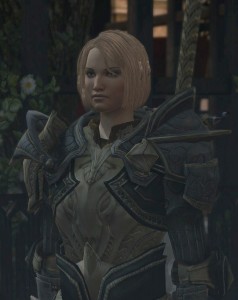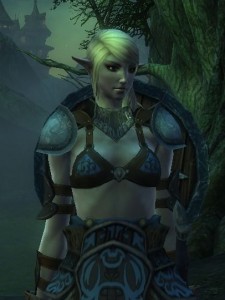The KiaSA Guide to MMOGs has this to say on guild leadership:
‘How does one man assert his power over another, Winston?’
Winston thought. ‘By making him suffer,’ he said.
‘Exactly. By making him suffer. Obedience is not enough. Unless he is suffering, how can you be sure that he is obeying your will and not his own? Power is in inflicting pain and humiliation. Power is in tearing human minds to pieces and putting them together again in new shapes of your own choosing.’
The estate of George Orwell protested that this bore striking similarities to 1984, but KiaSA Publications quickly printed a copy in an old font that looked a bit like a typewriter, spilled some tea on it, and claimed it had been written in 1926 so couldn’t possibly be a copy/paste job from Project Gutenberg, although when pressed were unable to explain how a guide to MMOGs could predate MMOGs themselves, the invention of the electronic computer, and the birth of its own authors. Fortunately The Guild Leaders Handbook offers a more forgiving and originally written look at the role of the guild leader with more emphasis on honesty and leading by example than tearing human minds to pieces.
Scott F. Andrews, long-time WoW guild leader and author of “The Officers’ Quarters” column at WoW.com, has collected his experience into a paper-based advice dispensing format known as a “book”, The Guild Leader’s Handbook, which you’ve probably seen a few reviews of as No Starch Press mailed out copies to a bunch of MMOG bloggers, most of whom aren’t as slack as us. Still, our motto is “if something’s worth reviewing, it’s worth waiting a couple of months then reminding people about that thing that sounded quite interesting a while back”.
The book is comprehensive, starting with the formation of a guild and recruitment, dealing with different personalities within a guild and associated drama, the activities you’ll embark on (raiding, PvP, roleplaying), keeping the guild going over time, and dealing with real life. It’s generally aimed at a Guild Leader, as the title rather suggests, but would also be of interest to others with guild responsibilities such as officers, or even anyone who just wants to know a bit more about guilds in MMOGs. Perhaps it could have widened its audience slightly by looking at things from a non-leader’s perspective, though. The section on recruitment, for example, has tips on what to look for and danger signs in a potential recruit; it’s not too difficult to reinterpret “danger signs for a recruitment officer” as “things not to do when applying to a new guild”, but a bit of extra advice on how to find a guild and make a good impression might be handy.
Much of The Guild Leader’s Handbook is applicable to any MMOG guild, and could probably be applied to other online communities, but the primary focus tends to be obtaining loot through large scale PvE encounters, i.e. World of Warcraft raiding, not unnaturally given that’s the author’s background. The chapter on raiding and especially raid leading seems particularly strong, and another chapter is devoted to loot distribution; PvP and roleplaying are combined in a chapter which is a good introduction for those not particularly familiar with them, but very much a whistle-stop tour of key points as in-depth implementation will vary from game to game.
Perhaps the weakest section for me is on People and Personalties, using “Player Personality Classes” (PPCs) as a way of identifying potential clashes. The eight proposed archetypes, each with two specs, are a bit woolly, and as the author says most people are composites of elements from several areas. “Classes” and “specs” are very natural for MMOG players, but with a lot of existing research on personality, motivation, team roles etc. in a business context I would have preferred to see something like Myers-Briggs types translated into gaming roles, or better still picking up some of Nick Yee’s MMORPG psychology research from Project Daedalus developing Bartle’s MUD player classifications into a more detailed study of player motivation. Still, the slight weakness of the personality class model doesn’t really undermine the more important advice on recognising, confronting and defusing drama. A few sections are highly subjective as well, such as what makes a good guild name, but the author acknowledges this and is never dogmatic in presentation.
Something the Handbook really drives home is how involving a guild can be. Course some guilds work fine as a loose collection of friends, but past a point they need time and effort, from members but mostly from leaders, and extend outside the boundaries of a game. Most prospective leaders will know at the outset they’ll need to schedule in-game encounters, lead the guild into them and distribute rewards, I suspect fewer anticipate they may need to confront substance abuse or relationship problems amongst members. The last chapter of the Handbook, “Dealing With Reality”, gives sensible and practical advice for such situations, and though it obviously can’t cover precisely what to do, at least it can prepare a guild leader for the possibility they might need to deal with a criminal confession at some point. It’s not all about the darker side of life, though, it also covers organising real-life guild meet-ups. In some ways it’s staggering that virtual items and monsters, pixels on a screen, bits in a database can provoke tension, envy, scheming, even hatred; but then they also spark joy, camaraderie, passion, the togetherness of a guild which sets it apart from a single player experience.
Overall, you could probably get much of the information in The Guild Leader’s Handbook from websites, blogs and game forums, but (as per Sturgeon) you’d have to wade through an awful lot of crud to get it. The Handbook pulls everything together with a nice, easy to read style, with something for most MMOG players. It’s a must-buy for a WoW player looking to start up a new guild for raiding, though I suspect that’s a pretty small market; even experienced guild leaders should find something of benefit. Steering clear of obscure jargon, it might even be suitable to offer friends and family an insight into why you play that silly game so much and get worked up about someone else claiming The Awesome Sword that should’ve been yours.
To conclude the KiaSA Review Service (available to anyone who’d like to send us stuff), a couple of pithy quotes for the cover of the second edition, bracketed sections optional:
“Better than Joyce’s Ulysses (in its coverage of loot distribution systems)”
“A la recherche du temps perdu has nothing on The Guild Leader’s Handbook (when it comes to advice on leading a raid)”
“(If your local store is out of Viennese spowling tape,) The Guild Leader’s Handbook makes an excellent (substitute, so long as the thrush-plate is) present (and straight, then curved.)

